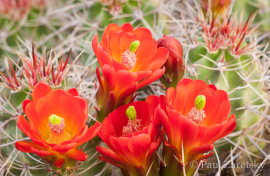New Years at Death Valley
Over the New Years holiday, I had the opportunity to visit Death Valley National Park. Having not been there before I had a lot of ground to cover with my partner in crime (Scott Arnaz) in just 2 1/2 days. We hit a lot of the major sites including the famous Mesquite Sand Dunes, Artist’s Palette, Zabriskie Point, Devil’s Golfcourse, and the Salt Flats near Badwater.
Particularly impressive was our visit to the remote Racetrack playa which is home to the mysterious sliding rocks. The playa is nestled between the Cottonwood Mountains to the east and the Last Chance Range to the west. During periods of heavy rain, water washes down from nearby mountain slopes onto the playa, forming a shallow, short-lived lake. Under the hot Death Valley sun, the thin veneer of water quickly evaporates, leaving behind a layer of soft mud. As the mud dries, it shrinks and cracks into a mosaic of interlocking polygons.
Strewn across the playa are rocks of various sizes, some weighing several hundred pounds, which leave long tracks in the sediment. Some of these tracks are in a straight line, but many make sharp changes of direction, long bending curves, or multiple twists and turns. There are several theories as to what causes the rocks to move. The predominent explanation is that during storms with accompanying high winds the rocks get blown around the slick, rain soaked playa and are subject to the multiple directional shifts of the wind. No one knows for sure since this phenomema has never been witnessed, but it certainly seems to be the most logical explanation.








This is cool! Thanks for your photos, I’m planning a death valley trip, and I’m adding Raectrack Playa to my list of places to see.